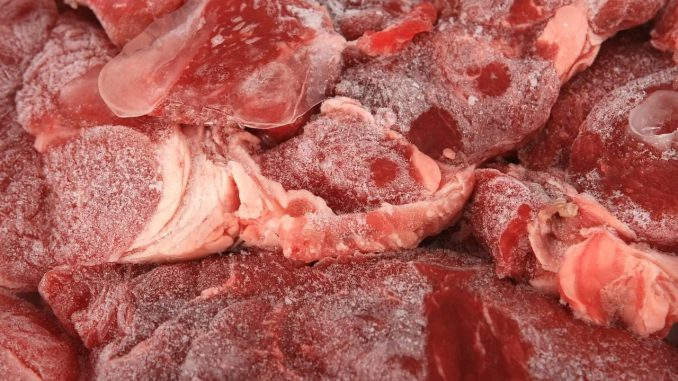
The red meat industry “shows good health”. At least as far as breeding is concerned. This is the conclusion drawn at the recent ordinary general assembly of the National Sheep and Goat Association (Anoc).
The inventory presented by the Secretary General of the Ministry of Agriculture, Mohammed Sadiki, provides information on the pole position of livestock in agricultural production. It provides an annual turnover estimated at 35.5 billion DH and has a total livestock of over 31 million heads. Sheep account for two thirds of them. They are followed by goats, 6.1 million, cattle, 3.3 million and camels, 183,000 heads.
In addition, this animal heritage ensures food safety up to 96% for milk and 98% for red meat. It also contributes significantly to the creation of jobs, in the order of 95 million working days annually.
The progress noted by the Ministry of Agriculture is mainly the result of efforts to improve sheep and goat breeds within the framework of the program contract between the supervisory authority and the Interprofessional Federation of Red Meat (FIVIAR). The number of breeders practicing this profession is currently close to one thousand.
The infatuation can be explained, of course, by the importance of the subsidies granted by the State. Since January 1, 2019, subsidies have been significantly improved compared to previous years. They currently stand at 4,000 DH/head for cattle breeders and between 700 and 800 DH/head for sheep. Males benefit from a bonus of 50 DH compared to females. And the same scale is applied to goats: 450 and 500 DH/head. While camels are supported at a rate of 5,000 DH/head.
As part of the consolidation of the achievements of the Green Morocco Plan, the Secretary General wants to reassure the future of the sector. Above all, with the implementation of the new agricultural strategy “Generation Green 2020-2030”.
The objective is to strengthen agricultural sectors through their integration via the federation of all stakeholders in a contractual and participatory framework between the State and professionals. In this context, the Ministry has undertaken the preparation of program-contracts for agricultural sectors for the period 2020-2030, including the red meat sector.
For his part, Abderrahmane Majdoubi, President of Anoc, welcomed “the level of partnership between the profession and the Ministry of Agriculture and the support provided to the sheep and goat sector, especially in this period of health crisis. In particular, “the launch of model livestock markets that meet health safety standards, the acceleration of the reopening of markets, and the distribution of subsidized barley at the national level,” said the leader of small ruminant farmers.
The development of the structures supervised by the Association over the last decade has made it possible to triple the number of groups, from 58 in 2008 to 166 in 2019. The same is true for the number of members, which rose from 4,714 in 2008 to 14,620 farmers in 2019.
Similarly, the number of local breeds registered in the genetic improvement program has increased from 8 in 2008 to 14 in 2019 and the number of breeders bred each year by the Association has now reached 30,000 head against 7,000 in 2008.
In order to consolidate the gains made and to ensure a good integration in the new strategy, the profession has announced the launch of a project to create a training center for breeding professions. Financed by the “Charafa” fund of the MCA-Morocco Agency and the Millennium Challenge Corporation of the United States of America, it will be jointly managed by the profession and the Ministry of Agriculture.
Never before have red meat prices reached such low levels as in these times of health crisis. Even among butchers in residential neighborhoods practicing the European cut, lamb is currently traded at around 60 DH/kg and veal at 65 DH/kg. This is the consequence of the disturbances that marred the celebration of the sacrifice combined with the closure of many souks to cattle. As a result, the farmers had to sell off their livestock to cope with the most urgent situation. And the decline affected all kinds of livestock (cattle, sheep and goats). But the crisis was felt much more by the cattle breeders, whose feed costs are much higher than those of other animals.
Cattle breeding is one of the main sectors of the agricultural sector. There are currently 3.3 million head of cattle (source: Ministry of Agriculture), 60% of which are destined for the meat sector and 40% for dairy farming. The sector would count nearly 800,000 farms. Cattle are the primary source of red meat, accounting for more than 50%, followed by sheep (40%) and goats (6%). However, national consumption of beef remains low: 5.5 kg/capita/year on average.

Be the first to comment